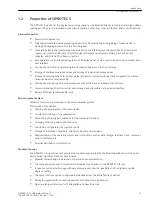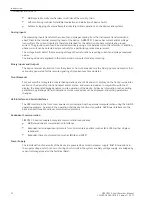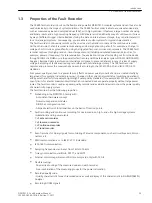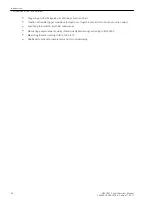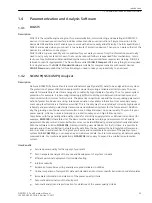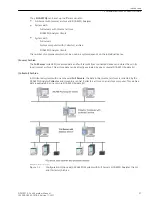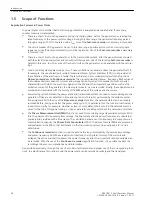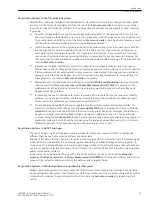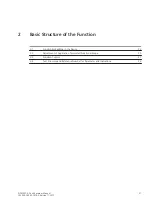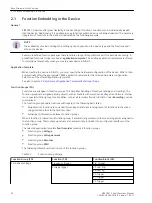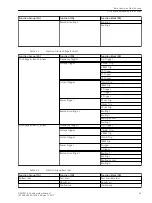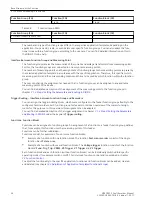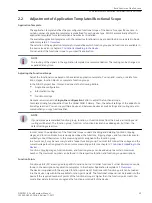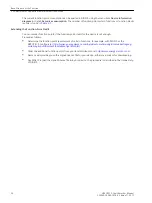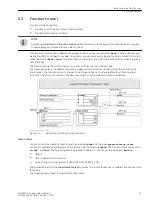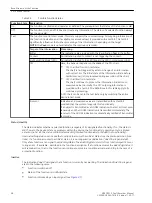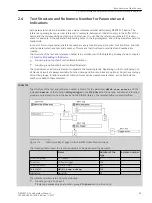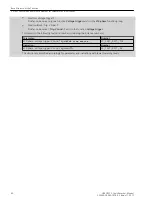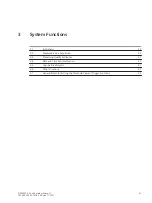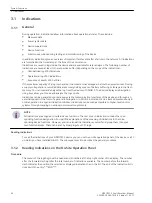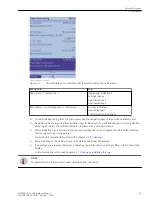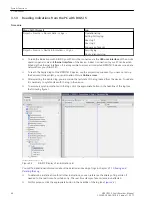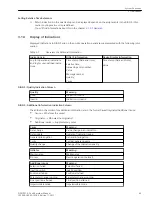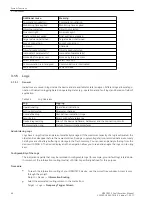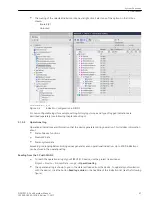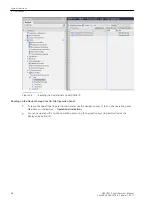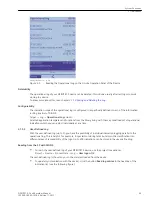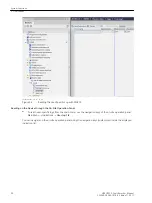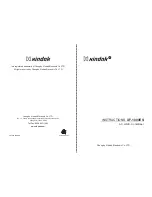
Adjustment of Application Templates/Functional Scope
Application Template
The application template defines the preconfigured functional scope of the device for a specific use case. A
certain number of application templates is predefined for each device type. DIGSI 5 automatically offers the
application templates for selection when a new device is installed.
The available application templates with the respective functional scope are described in more detail in Appli-
cation template
The selection of the application template first predefines which function groups and functions are available in
the device (see also in chapter
2.1 Function Embedding in the Device
You can adjust the functional scope to your specific application.
i
i
NOTE
The routing of the signals in the application templates is a recommendation. The routing can be changed or
expanded at any time.
Adjusting the Functional Scope
Adjust the functional scope based on the selected application template. You can add, create, or delete func-
tions, stages, function blocks, or complete function groups.
In the DIGSI 5 project tree, this can be done via the following Editors:
•
Single-line configuration
•
Information routing
•
Function settings
Siemens recommends the Single-line configuration Editor to adjust the functional scope.
Complete missing functionalities from the Global DIGSI 5 Library. Then, the default settings of the added func-
tionality are active. You can copy within a device and between devices as well. Settings and routings are also
copied when you copy functionalities.
i
i
NOTE
If you delete a parameterized function group, function, or function block from the device, all settings and
routings will be lost. The function group, function, or function block can be added again, but then, the
default settings are active.
In most cases, the adjustment of the functional scope consists of adding and deleting functions, tripping
stages, and function blocks. As previously described, the functions, tripping stages, and function blocks auto-
matically connect themselves to the measuring points assigned to the function group.
In a few cases, it may be necessary to add a feeder function group. You must still connect the voltage and the
current/voltage function groups to one or more measuring points (see chapter
Functions, tripping stages, function blocks, and function groups can be added up to a certain maximum
number. The maximum number can be found in the respective function and function-group descriptions.
Function Points
Function points (FP) are assigned to specific functions, but not to other functions. Further information can be
found in the description of application templates, in the chapter Application templates
The device is supplied with the acquired function-point credit. Functions with function points can be loaded
into the device only within the available function-point credit. The functional scope cannot be loaded into the
device if the required number of points of the functional scope is higher than the function-point credit. You
must either delete functions or upgrade the function-point credit of the device.
2.2
Basic Structure of the Function
2.2 Adjustment of Application Templates/Functional Scope
SIPROTEC 5, Fault Recorder, Manual
35
C53000-G5040-C018-5, Edition 11.2017
Summary of Contents for SIPROTEC 5
Page 8: ...8 SIPROTEC 5 Fault Recorder Manual C53000 G5040 C018 5 Edition 11 2017 ...
Page 18: ...18 SIPROTEC 5 Fault Recorder Manual C53000 G5040 C018 5 Edition 11 2017 ...
Page 134: ...134 SIPROTEC 5 Fault Recorder Manual C53000 G5040 C018 5 Edition 11 2017 ...
Page 212: ...212 SIPROTEC 5 Fault Recorder Manual C53000 G5040 C018 5 Edition 11 2017 ...
Page 422: ...422 SIPROTEC 5 Fault Recorder Manual C53000 G5040 C018 5 Edition 11 2017 ...
Page 426: ...426 SIPROTEC 5 Fault Recorder Manual C53000 G5040 C018 5 Edition 11 2017 ...
Page 452: ...452 SIPROTEC 5 Fault Recorder Manual C53000 G5040 C018 5 Edition 11 2017 ...
Page 490: ...490 SIPROTEC 5 Fault Recorder Manual C53000 G5040 C018 5 Edition 11 2017 ...

